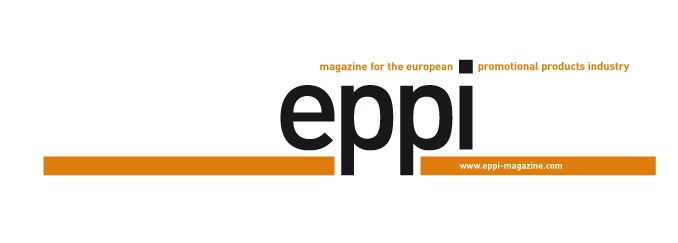Sweden offers one of the highest pro capita spendings on haptic advertising in Europe and is the home country of several significant international promotional products players. Companies that want to play a role on the Swedish market, should definitely do one thing in particular: show personal presence.
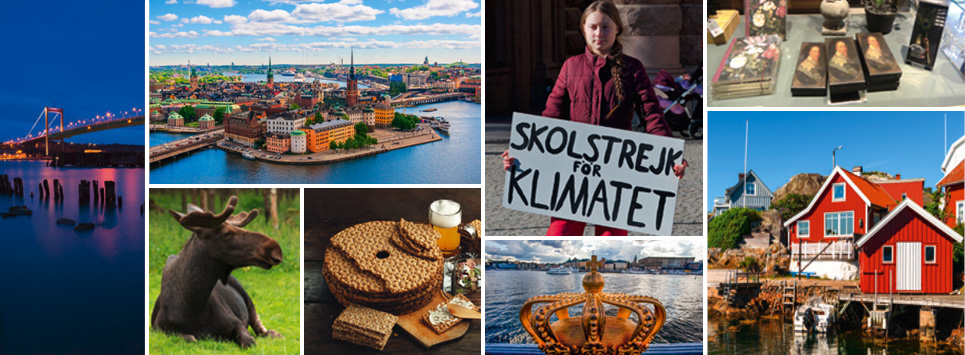
There are clichés about the fact that everything is so orderly in Sweden – one just has to think about the cute wooden houses, Ikea showrooms and people wearing floral wreathes for the midsummer celebrations and on top of this there are also the facts and figures: for instance that every Swedish person has a personal number, under which his whole life is stored. To what extent the clichés actually apply is an open question – however the Swedish promotional products industry certainly has the privilege that it disposes of a host of reliable data: The expenses for haptic advertising (“product media”) is listed separately in the annual survey of the institute for advertising and media statistics, IRM (Institutet für Reklam- och Mediestatistik). According to the survey, Swedish companies spent 6.3 billion Swedish Crowns (approx. 600 mil. Euros) on promotional products last year – whereby the spending for disciplines like trade fairs and events, production (by an advertising agency) or in-store promotion, which are listed separately also include expenses for haptic advertising, which means the actual balance of the Swedish promotional products industry is in fact slightly higher. In any case, haptic advertising is extremely popular in Sweden and actually ranks ahead of TV, radio and print advertising. If the spending on promotional products is broken down between the population, the pro capita expense is around 60 Euros on promotional products per annum – in comparison: In Germany – with a yearly volume of promotional products of around 3.5 bil. Euros the largest market in Europe – only around 42 Euros are invested in haptic advertising pro capita.
That the latter spending is so high in Sweden is not least due to the popularity of one specific product group: Textiles. “Workwear is not subject to taxation in Sweden and companies are obliged to provide their employees with work clothes”, explained Thomas Davidsson, Wackes. That employees of Swedish companies set off on their business trips or attend trade shows wearing branded clothing is to a large extent attributable to this fact. The Swedish climate also offers good prerequisites for textile companies: “Contrary to Southern Europe, where predominantly T-shirts and polo shirts are required, here also jackets, tops, functional and outdoor clothes are in high demand,” explained Torsten Jansson, New Wave Group. “Furthermore, a different quality level prevails, the low-priced segment is quite small in the European comparison.”
Defragmented market
As in many European markets, the promotional products sector is also very defragmented in Sweden. Davidsson: “The market volume is comparably high, but there are only a few very large companies – the five largest players account for perhaps 10% of the market volume.” Due to the geographical expanse of Sweden, this often involves a considerable logistical effort for the suppliers. Companies that want to serve many customers personally, have to travel a lot or need a correspondingly strong field service team. Nevertheless, the market is comparably manageable. “The industry structures are easily recognisable and clear,” according to the German exhibition service provider and consultant, Klaus Beyer, who has been supporting promotional products companies on the Scandinavian market for decades. “What’s more, fair play prevails, the rivalry among the distributors is not very well-pronounced, the competitors respect and hold each other in high regard.” Jansson added: “The traditional distribution chain ‘supplier – distributor – end user’ is to a large extent still intact. There are no textile wholesalers who sell to other distributors either.” Nonetheless, players from other industries are also penetrating the Swedish haptic advertising market – such as workwear manufacturers or chains for office accessories – and are attacking the developed structures. The weak Swedish Crown is also putting further pressure on the margins: “There is high price pressure,” confirmed Davidsson. “In the past, price wasn’t such a theme in Sweden, today everyone wants to save money. This is contradictory to the demand for increased environmental protection, CSR and product safety.”
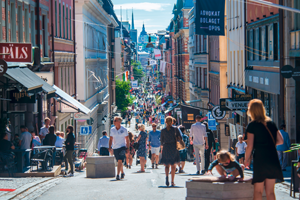
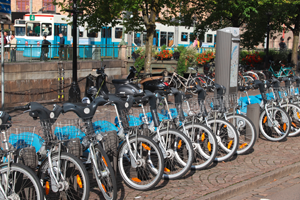
Because, like many of its Scandinavian neighbours, Sweden is taking on a leading role Europeanwide regarding sustainability. “There is a reason why Greta Thunberg is Swedish,” stated Davidsson. “Environmental protection and CSR are ongoing themes here. Our industry has to do its homework as far as safe supply chains are concerned. “For many agencies, promotional products are still not the choice they make when creating a campaign,” added Grahn-Nyd, who not only looks back at a career in advertising, but has also been actively holding seminars about the benefits of promotional products throughout Europe for six years. “One reason is that our industry does not present the return of investment on product media compared to other media well enough. Another reason is that the production and products have to be clean along the entire production chain. At the moment, this is by far the hottest topic in Scandinavia. But the industry is getting there.” Nevertheless, the Swedish promotional products players are faced with the challenge of having to fight with the prices, while at the same time becoming more sustainable.
The digitalisation offers opportunities here – a further field where the Swedes play a pioneering role. Davidsson stated: “Everything that one can digitalise, has to become digital, in order to save costs on things where the price can’t be squeezed any further. After all, not only good infrastructural conditions for the digitalisation prevail in Sweden, there is also a positive attitude towards the digital transformation. Indeed, we have one of the highest percentage rates of Internet access worldwide, even the children grow up very digitally.” In a country with a high rate of digitalisation one is also aware of the disadvantages of the new media. Haptic advertising with its “tangible” values opens up new possibilities: “Sweden has one of the highest ad-blocking rates in the world, the Swedes are tired of advertising. This on the other hand is an opportunity for our industry, because a longing for concrete, tangible elements is arising.”
Being part of it is what counts

Sweden is very open to digitalisation and offers a vibrant startup culture. The best example is the globally successful streaming service Spotify.
As far as business in Sweden is concerned, the digitalisation certainly has its limits: Face-to-face contacts are essential in business life. The fika – coffee break – is more than a culinary custom, it is symbolic for a culture of public relations. “We have to meet the people personally in order to trust them – nobody would do business with someone they have never met,” stated Davidsson. “It is almost like in China, where the guanxi – the personal relationship – also plays a major role.” Personal exchange and a culture of discussion shape the everyday routine in Swedish companies, as Davidsson continued: “We love meetings – whether an informal one during the fika or in a more official discussion round. We get everyone round the table and everyone can state his opinion. This sometimes leads to the fact that decisions take longer, but subsequently the processes happen faster. Because the result of flat hierarchies is a high degree of own responsibility.” Due to Davidsson the fact that many international companies don’t manage to get a foothold in Sweden in spite of offering good products and services, is due to a lacking feeling for the Swedish networking behaviour: “Those, who don’t understand the ‘fika mentality’, will struggle to be successful in Sweden. Taking part in a trade show is only the first step – the real work starts afterwards.”
Because the motto is: Travelling, making appointments, intensifying contacts. Beyer: “Business in Sweden entails relationship management. The initial priority is to establish a personal network and carry out lobbying work for oneself. However, this pays off eventually because although it might take longer to convince the customers of one’s benefits, one is ensured their loyalty for a long time to come.” “When are you coming?” is an advertising slogan the Swedish tourist authorities used to attract visitors. A question that could equally be addressed to all promotional products specialists, who want to succeed in “Sverige” with their products. The portraits on the following pages reveal which products and peculiarities Swedish companies have to offer.
// Till Barth
photos: Shutterstock.com
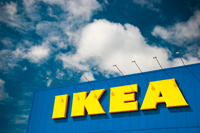 Despite all criticism about the product quality and controversy about the founder and certain company practices: The furniture store with the striking blue and yellow design is the ultimate symbol for Sweden for people all over the world and generations of people grew up between Billy, Pax and Klippan. With its self-service and self-assembly concept, Ikea revolutionised the furniture industry and at the same time succeeded in making sure the customers highly appreciate the self-assembled items of furniture – the “Ikea effect” is proven in terms of its behavioural influence. With a circulation of 220 million copies, the Ikea catalogue is the print publication with the highest circulation in the present age – ranking even ahead of the bible. And thanks to the famous pencil, thousands of which are found in every subsidiary, Ikea even disposes of an iconic promotional product.
Despite all criticism about the product quality and controversy about the founder and certain company practices: The furniture store with the striking blue and yellow design is the ultimate symbol for Sweden for people all over the world and generations of people grew up between Billy, Pax and Klippan. With its self-service and self-assembly concept, Ikea revolutionised the furniture industry and at the same time succeeded in making sure the customers highly appreciate the self-assembled items of furniture – the “Ikea effect” is proven in terms of its behavioural influence. With a circulation of 220 million copies, the Ikea catalogue is the print publication with the highest circulation in the present age – ranking even ahead of the bible. And thanks to the famous pencil, thousands of which are found in every subsidiary, Ikea even disposes of an iconic promotional product.
 There are many Swedish specialities and luxury products that are popular beyond the country’s borders – whether crispbread, cinnamon buns or köttbullar (meatballs), whether surströmming (fermented herring that is famous for its strong scent) or the smokeless tobacco Snus that is pushed under the lip, where it enfolds its (for the inexperienced surprising) effect. One of the most important basic foodstuffs is however coffee – the Swedish people are one of the biggest coffee consumers in the world. The brown beverage is inseparably linked to an indispensable ritual: the fika. To simply call the fika a “coffee break”, doesn’t do justice to it, it serves for public relations, social bonding and as a platform for mutual exchange – on both a private and business level. According to a survey by Kairos Future more than 60% of the Swedish people believe that they work more efficiently as a result of the joint coffee break. So, anyone who wants to do business successfully in Sweden should take a seat around the table – even if he doesn’t like coffee. Other drinks are namely also allowed.
There are many Swedish specialities and luxury products that are popular beyond the country’s borders – whether crispbread, cinnamon buns or köttbullar (meatballs), whether surströmming (fermented herring that is famous for its strong scent) or the smokeless tobacco Snus that is pushed under the lip, where it enfolds its (for the inexperienced surprising) effect. One of the most important basic foodstuffs is however coffee – the Swedish people are one of the biggest coffee consumers in the world. The brown beverage is inseparably linked to an indispensable ritual: the fika. To simply call the fika a “coffee break”, doesn’t do justice to it, it serves for public relations, social bonding and as a platform for mutual exchange – on both a private and business level. According to a survey by Kairos Future more than 60% of the Swedish people believe that they work more efficiently as a result of the joint coffee break. So, anyone who wants to do business successfully in Sweden should take a seat around the table – even if he doesn’t like coffee. Other drinks are namely also allowed.


